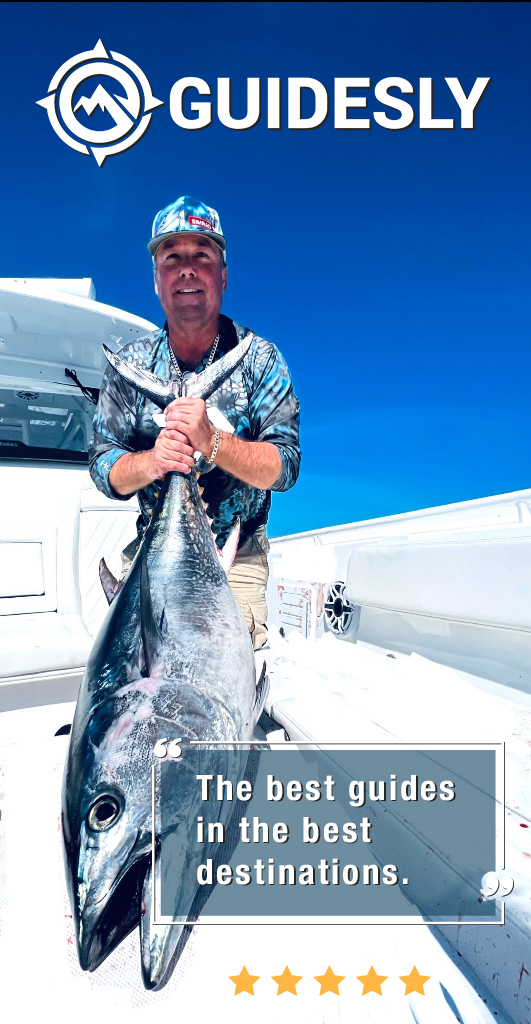Top 5 Best Lures at Buoy 10
Here are the top baits and lures to use when you're salmon fishing at Buoy 10.

Buoy 10 is the humble ship marker situated at the mouth of the Columbia River, where it meets with the Pacific Ocean. This is where anglers have the opportunity to fish for Chinook salmon and coho salmon, as it is one of the most productive salmon fisheries in the state of Oregon and across the Lower 48.
Buoy 10 is a must-visit salmon fishing destination if you’re in Oregon, Washington, and around the Pacific Northwest or the general West Coast area. Among anglers, its name refers to the entire lower estuary fishing area from the buoy clear up to Tongue Point to the east of Astoria. It’s a worthwhile trip if you’re looking to target some of these hard-fighting and tasty fish.
If you’re interested in salmon fishing in Buoy 10, you should know what bait or lure will give you the best chance of successfully catching salmon. Here are the top baits and lures for salmon fishing at Buoy 10:

1. Herring

Herring is the bait of choice for most anglers fishing at Buoy 10. Depending on what you hear from other salmon anglers, there’s still a rigorous debate on whether it’s best to plug-cut herring or leave them whole. Either way, this fresh bait fish is a reliable and effective choice for luring salmon and other fish species found at Buoy 10.
It’s good to mix up the sizes of the herring once in a while because salmon preferences seem to change often. The most popularly sold bait of this type is the blue and green label herring, often used to target coho salmon. The big purple label herring bait is better if you want to catch Chinook salmon.
2. Spinners and Spinnerbaits
Spinners and spinnerbaits are the second most popular lures at the Buoy 10 fishery after herring. This is the best option for an angler who doesn’t want or can’t use a natural bait fish option. Some days, spinners can equal or out-fish live or dead bait fish. When choosing colors, red and white spinners are a good overall choice. During early morning or overcast low light situations, chartreuse or green dot spinners are very effective.
To reduce or eliminate your fishing leader from twisting because of using a spinner, position a swivel halfway down your leader or at the end of your rigging wire.
3. Diver Lures or Diving Planers
Those who have been on a fishing trip at Buoy 10 know that using a diver can greatly help to lure in salmon. Most anglers also like to add a flasher as an attractor. Diver lures are a great addition to your rig because salmon are most likely to bite deeper in the water column. Salmon are often suspended in the water column during incoming tide and on the bottom during the outgoing tide. You will need to carefully match the depth of your diver to the water’s depth.
Compared to traditional sinkers, a diver has the advantage of tripping upon strike, relieving the pull associated with the dive and allowing you to battle with a fish without feeling the weight. Divers’ colors also attract fish, so you can try a variety before settling on what’s most effective for you and your area of Buoy 10. A Delta or a Deep 6 diver lure is the most popular diver used in the fishery. Tie on a snap on your fishing leader about two feet behind the flasher and add a bead chain swivel. Tie on four more feet of mooching leader to create a stable salmon fishing rig with a diver lure.

4. Flashers
Flashers are often used to effectively fish for salmon because they attract the fish through flashes and vibrations. Flashers produce horizontal strobe-like flashes of light as they spin. A popular rig to pair up with a flasher is Yakima Bait’s Free Sliding Spreader and Rigging Wires because they make untangling lines easier and faster after your line inevitably rotates with a spinner when you cast and hook your target.
5. Hoochie Lures
Hoochie lures are often paired with spinners and flashers when an angler is trolling for salmon. A hoochie cannot be used by itself as it provides no action. It will only swim straight, which would attract species such as tuna, but won’t attract salmon. However, if you use the right leader to make it roll as it tows behind a flasher, it will imitate the movement of wounded bait that salmon would want to strike.
The best hoochie colors for salmon are Dark Spatter Back, Chartreuse Spatter Back, and Green Glow. Add beads as spacers between the hoochie and your lead hook. There should be enough space, so your trailing hook is completely exposed from the bait. Doing this will make you less likely to miss any short-striking fish.



